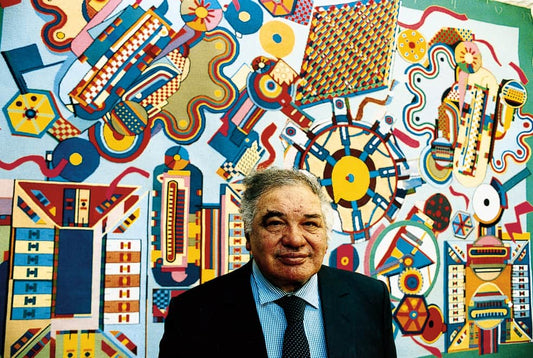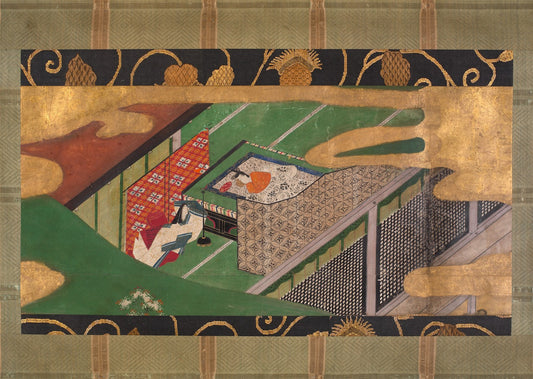Self-Portraits
Self-portraits are one of the most popular forms of portraiture throughout art history, perfected by artists like Vincent Van Gogh and Pablo Picasso. However, other artists included hidden or subtle self-portraits in their work to share their life experiences, demonstrate their power, and claim their work as their own. Subtle self-portraits within artwork allow artists to include personal content, emotional depth, and symbolism. Some self-portraits are autobiographical but not necessarily blatant and obvious self-portraits. In these pieces, the artist becomes the storyteller, weaving experiences from their life into their art. In other works, the self-portrait is hidden. In these paintings, the artistic choice to hide a self-portrait indicates a desire to claim the work as one’s own and to stamp artistic identity onto an otherwise impersonal piece.

Caravaggio’s Young Sick Bacchus, 1593
This piece starkly contrasts Caravaggio’s later oil painting of Bacchus. Rather than portraying the god of wine, indulgence, and debauchery in a youthful, relaxed state, Caravaggio paints Bacchus as uncomfortable and grotesque. Bacchus’s uneasy facial expression and tilted head indicate suffering and pain.

According to Caravaggio’s first biographer, Giovanni Baglione, the painting was a cabinet piece painting using a mirror. Bacchus’s pallid and yellowing skin and dark under eyes mirror the artist’s own illness at the time of the painting’s completion. During his first years in Rome, he fell ill and spent six months in a hospital with what is suspected to have been malaria or extreme anemia. The spoiled and wrinkled fruits in front of Bacchus become plump and ripe in the later painting, reflecting Caravaggio’s improved condition. Most likely, the painting was used by Caravaggio to market himself as a master of both mythological paintings and still lives.
Clara Peeters’s Still Life with Cheeses, Almonds, and Pretzels, 1615
There are no visible human figures in this classic Dutch still-life. This painting is an example of a banquet still-life, as it features an array of foods. However, among the foods, Venetian glasses, and Chinese dishes, the artist leaves her mark on the painting in a subtle yet impactful way.

In the reflection of the ceramic goblet’s lid, there is a small self-portrait of Peeters, distorted by the curve of the cup and the reflected light. The artist also “carved” her name into the butter knife in the front of the painting rather than signing the piece. She was inspired to include the hidden self-portrait by Jan Van Eyck, who painted his portrait in his 1434 Arnolfini Portrait. Arguably the most debated painting of the 20th century, the piece features a hidden self-portrait in the mirror behind the Arnolfini couple. Scholars have assumed that the figure in the mirror wearing red is Van Eyck himself based on his painting Portrait of a Man, which is thought to be a self-portrait.
Diego de Velázquez’s Las Meninas, 1656
Velázquez was one of the most significant artists of the Spanish Golden Age, working under the court of King Philip IV of Spain and Portugal. Las Meninas depicts the Spanish court in the painter’s studio in the Royal Alcazar Palace in Madrid. The five-year-old Infanta Margaret Theresa is surrounded by her ladies in waiting, chaperone, bodyguard, dog, and two dwarfs. Just behind the group, the artist paints himself in the corner, actively painting on a large canvas.

The choice to include himself in an intimate painting of nobles was a bold choice, yet it demonstrates the status of court painters at the time, who were held in high regard by their patrons. It was difficult for painters to gain high status during the 17th century, as painting was regarded as a craft, not a high art like poetry or music. However, Velázquez was given the title of palace chamberlain in 1651, earning him status and material reward. When he painted Las Meninas, he had been with the royal household for 33 years. King Philip IV loved art and shared an unusually close relationship with the painter, whom he mourned in the margins of the official document appointing Velázquez’s successor by writing, “I am crushed.” Velázquez’s self-portrait is a calculated commentary on the power and importance of painters in royal courts.
From Caravaggio to Velázquez, self-portraiture and its various permutations offer viewers a glimpse into the importance of artistic identity. Hidden or subtle self-portraits can unveil an artist’s identity, power, and intimate narratives, empowering viewers with a glimpse into the creator’s personality.
©ArtRKL™️ LLC 2021-2024. All rights reserved. This material may not be published, broadcast, rewritten or redistributed. ArtRKL™️ and its underscore design indicate trademarks of ArtRKL™️ LLC and its subsidiaries.





